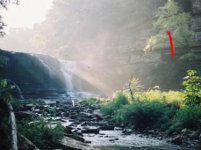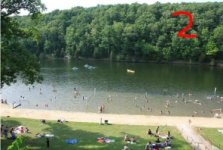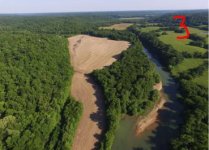maxxkatt
Forum Supporter
I have been hunting along a river and several creek in an intense and very major CW battle area and have never found any relics in the flood plains. (no it is not in any protected federal or state park).
these rivers and creeks have a flood about every two years. so calculating back from 1864 then that is a lot of silt.
I am about to give up on these flood pain areas except maybe in the creek beds. I don't think lead bullets or other CW relics get washed up in the flood plain, and those up there from 1864 will most likely be 3-4 feet deep in the sand and silt.
any experience, comments or ideas are appreciated. I don't want to be wasting my time in an area where it is impossible to find CW relics. I mostly find old beer cans or new rifle bullets.
update: the creeks I am hunting never dry out. At least since 1967. They have high banks 8-12 feet and overflow almost every 2 years big time. And each time they bring up even more silt and sand. So I am convinced that any good silver coins or CW relics are under many feet of silt and sand.
these rivers and creeks have a flood about every two years. so calculating back from 1864 then that is a lot of silt.
I am about to give up on these flood pain areas except maybe in the creek beds. I don't think lead bullets or other CW relics get washed up in the flood plain, and those up there from 1864 will most likely be 3-4 feet deep in the sand and silt.
any experience, comments or ideas are appreciated. I don't want to be wasting my time in an area where it is impossible to find CW relics. I mostly find old beer cans or new rifle bullets.
update: the creeks I am hunting never dry out. At least since 1967. They have high banks 8-12 feet and overflow almost every 2 years big time. And each time they bring up even more silt and sand. So I am convinced that any good silver coins or CW relics are under many feet of silt and sand.
Last edited:





